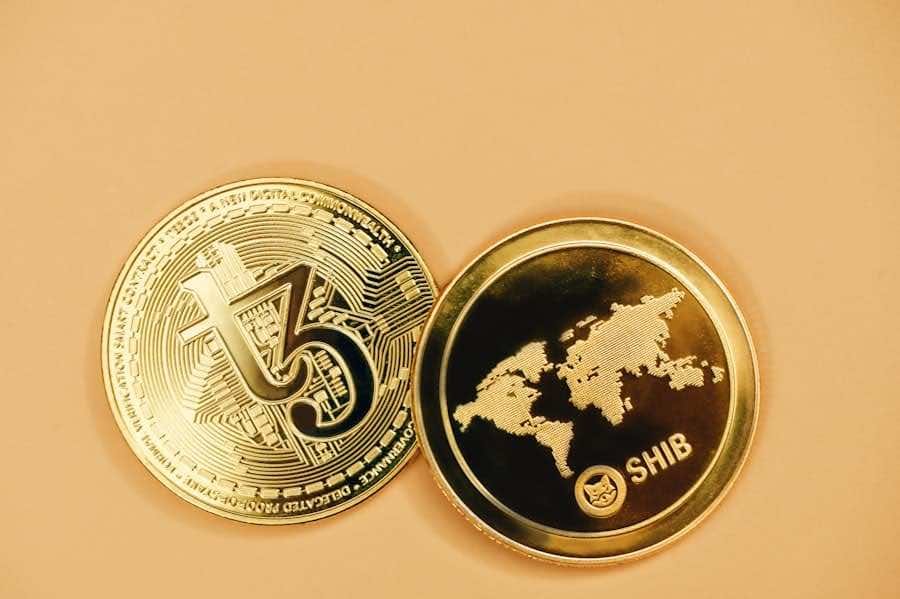Decentralised Identity Management (DIM) represents a paradigm shift in how individuals and organisations manage their identities in the digital realm. Traditionally, identity management has been centralised, relying on a few large entities, such as governments or corporations, to verify and store personal information. This centralisation often leads to vulnerabilities, including data breaches and misuse of personal data.
In contrast, DIM empowers individuals by allowing them to control their own identity information without relying on a central authority. This approach not only enhances user autonomy but also fosters trust in digital interactions. At its core, decentralised identity management leverages technologies such as blockchain to create a secure and verifiable identity system.
Users can create digital identities that are cryptographically secured and can be shared selectively with service providers. This means that individuals can choose what information to disclose and to whom, significantly reducing the risk of identity theft and fraud. The concept of self-sovereign identity (SSI) is integral to DIM, where users have full ownership of their identity data, enabling them to manage their digital presence in a way that aligns with their personal preferences and privacy concerns.
Summary
- Decentralised identity management refers to the concept of individuals having control over their own digital identities without the need for a central authority.
- The benefits of decentralised identity management include increased privacy, reduced risk of identity theft, and improved user control over personal data.
- Decentralised identity management works by using distributed ledger technology to store and manage identity information in a secure and tamper-proof manner.
- Blockchain plays a crucial role in decentralised identity management by providing a transparent and immutable record of identity transactions.
- Security and privacy are key considerations in decentralised identity management, with the need for robust encryption and authentication protocols to protect user data.
The Benefits of Decentralised Identity Management
Enhanced Privacy
In a decentralised system, users are not required to share excessive personal information with every service provider they interact with. Instead, they can provide only the necessary data for a specific transaction or interaction, thereby minimising the risk of exposure. This selective disclosure is particularly beneficial in sectors such as healthcare and finance, where sensitive information is often required.
Improved Security
Centralised systems are often prime targets for cyberattacks, as a single breach can compromise vast amounts of personal data. In contrast, decentralised identity systems distribute data across a network, making it significantly more challenging for malicious actors to access comprehensive user information. Additionally, the use of cryptographic techniques ensures that even if data is intercepted, it remains unreadable without the appropriate keys.
Layered Security Approach
This layered security approach not only protects individual identities but also enhances the overall integrity of digital transactions.
How Decentralised Identity Management Works

Decentralised identity management operates through a combination of technologies and protocols that facilitate the creation, storage, and verification of digital identities. At the heart of this system is the concept of a digital wallet, which allows users to store their identity credentials securely. These credentials can include anything from government-issued IDs to educational certificates and professional licenses.
Users can generate these credentials through trusted issuers who validate their identity information. When a user wishes to authenticate themselves to a service provider, they can present their credentials from their digital wallet without revealing unnecessary personal details. This process typically involves cryptographic proofs that confirm the validity of the credentials without disclosing the underlying data.
For instance, a user might prove they are over a certain age without revealing their exact birthdate. This method not only protects user privacy but also streamlines the verification process for service providers, who can quickly ascertain the authenticity of the presented credentials.
The Role of Blockchain in Decentralised Identity Management
Blockchain technology plays a pivotal role in decentralised identity management by providing a secure and immutable ledger for storing identity information. Each transaction or credential issued is recorded on the blockchain, creating a transparent and tamper-proof history of identity interactions. This decentralised ledger eliminates the need for a central authority to verify identities, as the blockchain itself serves as a trusted source of truth.
Furthermore, blockchain enables the concept of verifiable credentials, which are digital statements made by an issuer about a subject. These credentials can be cryptographically signed and stored on the blockchain, allowing users to present them as needed while maintaining control over their data. For example, a university could issue a diploma as a verifiable credential on the blockchain, which graduates can then share with potential employers without fear of forgery or misrepresentation.
The transparency and security inherent in blockchain technology thus enhance trust in the identity management process.
Security and Privacy in Decentralised Identity Management
Security and privacy are foundational elements of decentralised identity management systems. By design, DIM prioritises user control over personal data, which inherently reduces the risk of unauthorised access and misuse. Users maintain ownership of their credentials and can revoke access at any time, ensuring that they have full agency over who can view their information.
This contrasts sharply with traditional systems where users often relinquish control over their data to third parties. Moreover, advanced cryptographic techniques underpin the security framework of DIM. Public-key cryptography allows users to generate unique keys for their identities, ensuring that only they can access their information.
Additionally, zero-knowledge proofs enable users to verify claims without revealing the underlying data itself. For instance, a user could prove they hold a valid driver’s licence without disclosing their name or address. This level of privacy protection is crucial in an age where data breaches are commonplace and individuals are increasingly concerned about how their information is used.
Use Cases for Decentralised Identity Management

The applications of decentralised identity management span various sectors, each benefiting from enhanced security and user control over personal data. In the financial sector, for instance, DIM can streamline Know Your Customer (KYC) processes by allowing customers to share verified credentials without exposing sensitive information repeatedly. This not only accelerates onboarding processes but also reduces compliance costs for financial institutions.
In healthcare, decentralised identity management can revolutionise patient data sharing. Patients could control access to their medical records through secure digital identities, granting healthcare providers access only when necessary while maintaining privacy over sensitive health information. This model not only empowers patients but also facilitates better care coordination among providers by ensuring that relevant information is shared securely and efficiently.
Challenges and Limitations of Decentralised Identity Management
Despite its numerous advantages, decentralised identity management faces several challenges that must be addressed for widespread adoption. One significant hurdle is the need for interoperability among different systems and platforms. As various organisations develop their own DIM solutions, ensuring that these systems can communicate effectively with one another is crucial for creating a seamless user experience.
Without standardisation, users may find themselves locked into specific ecosystems that limit their ability to manage their identities across different services. Another challenge lies in user education and adoption. Many individuals remain unfamiliar with concepts such as blockchain and cryptographic security measures, which may hinder their willingness to embrace decentralised identity solutions.
For DIM to gain traction, comprehensive educational initiatives must be implemented to inform users about the benefits and functionalities of these systems. Additionally, addressing concerns about usability is essential; if users find decentralised identity management cumbersome or complex, they may revert to traditional methods that offer less security but greater familiarity.
The Future of Decentralised Identity Management
Looking ahead, the future of decentralised identity management appears promising as technological advancements continue to evolve alongside growing concerns about privacy and security in the digital landscape. As more organisations recognise the value of user-centric identity solutions, we may witness an increase in collaborative efforts aimed at developing interoperable standards that facilitate seamless integration across various platforms. Furthermore, regulatory frameworks will likely play a crucial role in shaping the future of DIM.
Governments and regulatory bodies are beginning to explore how decentralised identity solutions can align with existing laws while promoting innovation in identity management practices. As these frameworks develop, they will provide guidance on best practices for implementing DIM while ensuring that user rights are protected. In conclusion, decentralised identity management stands at the forefront of transforming how individuals interact with digital services by prioritising privacy, security, and user control over personal data.
As challenges are addressed and adoption increases, DIM has the potential to redefine trust in digital interactions across various sectors, paving the way for a more secure and user-centric internet experience.
Decentralised identity management is a crucial aspect of modern business operations, allowing for increased security and privacy for both customers and businesses. In a related article on everything you need to know about insurance before starting your own business, the importance of protecting your business from potential risks is highlighted. Just as insurance safeguards your business from unforeseen events, decentralised identity management safeguards your digital assets and personal information from cyber threats. Both are essential components of a successful and secure business operation in today’s digital landscape.
FAQs
What is Decentralised Identity Management?
Decentralised Identity Management is a system that allows individuals to have control over their own digital identities without the need for a central authority or intermediary.
How does Decentralised Identity Management work?
Decentralised Identity Management uses blockchain technology to create and manage digital identities. Each individual has a unique digital identity that is stored on a distributed ledger, and they have control over who can access and use their identity information.
What are the benefits of Decentralised Identity Management?
Some of the benefits of Decentralised Identity Management include increased privacy and security, reduced risk of identity theft, and the ability for individuals to have more control over their personal data.
Is Decentralised Identity Management secure?
Decentralised Identity Management is designed to be more secure than traditional identity management systems. The use of blockchain technology and cryptographic techniques helps to protect individuals’ identity information from unauthorized access and tampering.
What are some examples of Decentralised Identity Management systems?
Some examples of Decentralised Identity Management systems include Sovrin, uPort, and Microsoft’s Decentralised Identity Foundation. These systems are designed to give individuals more control over their digital identities and how they are used.
